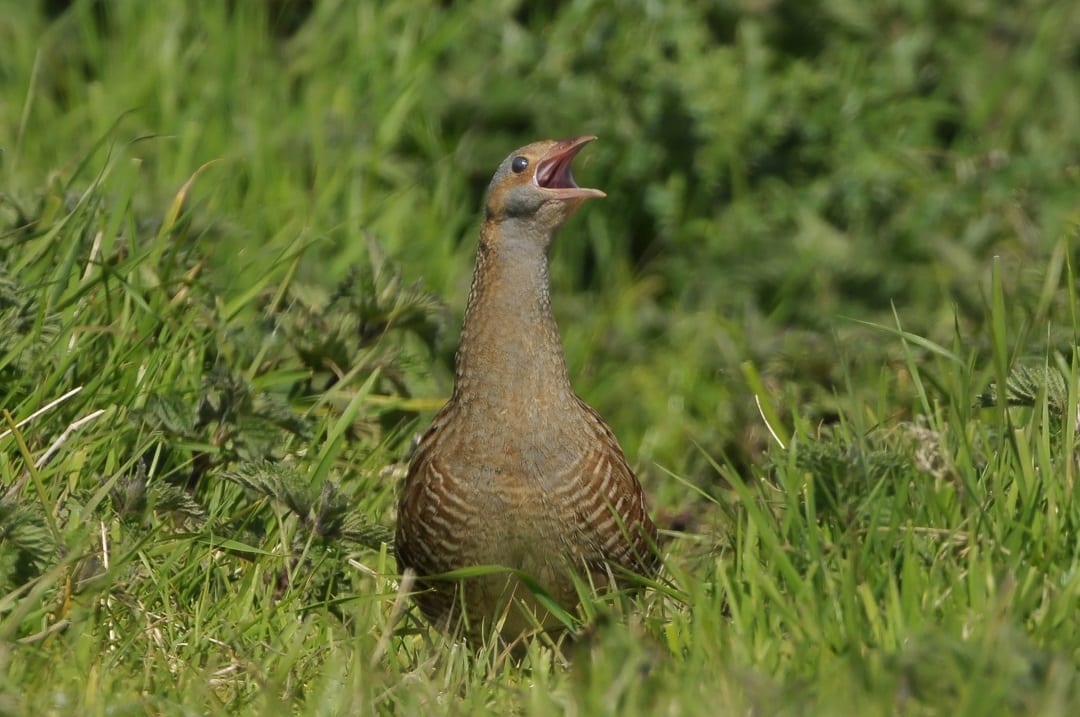
BirdWatch Ireland welcomes the news that Ireland’s Corncrake population is on the rise but says that cautious optimism is required as numbers still remain critically low.
Data released by the National Parks and Wildlife Service (NPWS) on Wednesday showed that numbers of Corncrakes recorded in the core breeding areas of Donegal, Mayo and Galway have increased since 2022. Additionally, the survey data notes the first confirmed sighting of a Corncrake on the Aran Islands for 25 years.
A total of 218 Corncrake breeding territories were recorded in 2023, up by 10 per cent on 2022 and exceeding 200 for the first time in a decade.
Since 2021, the Corncrake/Traonach LIFE Project – a five-year project funded through the EU and co-ordinated by the NPWS – has been working on a number of measures aimed at preventing the further decline of the Corncrake. Data about the Corncrake population in Ireland is gathered on an annual basis.
BirdWatch Ireland welcomes the positive news for Corncrakes in Ireland. Through schemes implemented by Corncrake Life, farmers and landowners in the core breeding areas of Donegal, Mayo and Galway are managing 1,500 hectares of land for corncrakes. This includes just under 10ha of land owned by BirdWatch Ireland at our reserve at Termoncarragh, Co. Mayo, where four calling males were recorded this summer. With the numbers rising from a very low baseline, the organisation said there is a dire need for such conservation efforts to be continued and expanded upon if we are to bring the species back from the brink of extinction in Ireland.
The Corncrake is a red-listed species that has suffered drastic population declines in recent decades. Once a common summer visitor whose distinctive “kerrx-kerrx” call was heard across Ireland, it is now confined to small parts of Donegal and Western parts of Connaught. Their population decline is largely due to the advent of intensive farming practices, particularly the conversion of hay meadows to multiple cut silage and loss of marginal vegetation which would have provided cover for the birds on their first arrival in spring. Corncrakes are now confined to areas where traditional farming methods are still utilised.
BirdWatch Ireland staff are involved in Corncrake conservation measures including habitat management on Tory Island off the coast of Co Donegal and on our Termoncarragh Reserve in Co Mayo. This involves working very closely with local farmers and landowners, who play a crucial role in this vital work.
Members of the public also play a vital role in Corncrake conservation as they are our eyes and ears around the country. Corncrakes are nearing the end of their breeding season for this year so hearing the distinctive call would be unusual. However, if you have been fortunate enough to see or hear a Corncrake, we would ask you please to report it, along with as much information as you can about the location, habitat, appearance, sound and behaviour of the bird, via the Corncrake Life website. This will help to provide much-needed information on these scarce birds and will aid efforts to conserve this species in Ireland.

